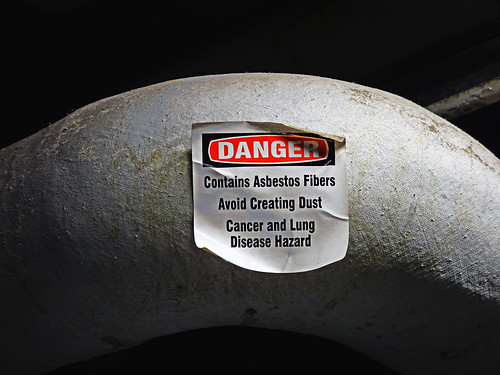EPA Agrees to Address Asbestos Data-Collection Deficiencies
Legislation & LitigationWritten by Tim Povtak | Edited By Walter Pacheco

Under pressure from a multistate coalition, the U.S. Environmental Protection Agency has agreed to tighten its data collection process for asbestos, moving the country another step closer to banning the toxic substance.
The agreement comes six months after a U.S. District Court judge in California ruled the EPA must improve its ineffective data collection on asbestos imports, and two years after attorneys general in multiple states challenged in court the EPA’s lack of more restrictive asbestos regulations.
“The longtime failure of the EPA to regulate asbestos is an environmental injustice and public health tragedy,” said California Attorney General Rob Bonta, a leader in the legal battle with the EPA.
Asbestos is a naturally occurring mineral that causes a wide range of serious health issues, including malignant mesothelioma cancer.
“This is a huge win for public health,” said Linda Reinstein, president and co-founder of the Asbestos Disease Awareness Organization, a leading nonprofit organization that has lobbied for years to tighten regulations.
Asbestos Exemptions Could Be Eliminated
As part of the agreement released June 7, the EPA will initiate stricter rulemaking for asbestos data collection, which should eliminate exemptions that exist under the current regulations.
Conditioned on court approval, the EPA agreed to publish the proposed rule changes within the next nine months and the final rules no later than 18 months after the date of settlement.
The agreement directs the EPA to initiate its rulemaking under the Toxic Substances Control Act guidelines and address the data-gathering deficiencies that were identified in the California court ruling in December.
In the past, the EPA has contended that the voluntary data reporting used today by importers, processors and manufacturers provided sufficient information under the current Chemical Data Reporting rule.
“The data collected in response to this rule could help inform EPA’s ongoing efforts to evaluate whether asbestos presents unreasonable risk of injury to health or the environment, and any future risk management actions taken by the agency to eliminate any such risk,” an EPA spokesperson told The Mesothelioma Center at Asbestos.com. “The agency is committed to protecting against unreasonable risk.”
California was one of the states that originally filed the lawsuit against the EPA in 2019 and was part of the settlement June 7. The others listed were Massachusetts, Oregon, Minnesota, New Jersey, Hawaii, Maine, Washington and Maryland. The District of Columbia also joined the proceeding.
“The lack of reporting on asbestos has been a gaping hole in the EPA’s efforts to protect Americans from exposure to this lethal carcinogen,” Reinstein said. “We’ve always said that we can’t protect Americans from asbestos if we don’t know where it is.”
Asbestos Is Already Heavily Regulated
Once lauded for its heat resistance and versatility, asbestos is also dangerously toxic. It was once used in hundreds of consumer products and ubiquitously in commercial and residential construction.
Asbestos is already heavily regulated within the U.S. and consumption has dropped dramatically in recent decades. Mining of asbestos in the U.S. stopped almost two decades ago.
According to the latest U.S. Geological Survey Mineral Commodity Summaries Report, an estimated 300 metric tons of raw asbestos was imported in 2020. All of it was used by the chloralkali industry to manufacture semipermeable diaphragms for making chlorine.
It was the second-smallest amount imported in the last 50 years and only a fraction of the all-time high of 803,000 tons imported in 1973.
Also imported into the country, but not included in the report, were smaller amounts of asbestos within already manufactured products. These include brake blocks used in the oil industry, vehicle friction products, and gaskets used to make titanium dioxide.
In December 2020, the EPA released Part 1 of its long-awaited Final Risk Evaluation for Asbestos and found 16 conditions of asbestos use that presented unreasonable risk to human health.
Legacy Asbestos Is Biggest Concern
Later this year, the EPA will release its Final Risk Evaluation Part 2 and include legacy asbestos, which is found in older homes and commercial buildings and is the biggest risk to the general public today.
Legacy asbestos was added to the Toxic Substances Control Act in 2019 as part of the ruling involving the lawsuit with the states and the District of Columbia.
After Part 2 of the Final Risk Evaluation has been released, the EPA will produce new regulatory guidelines for asbestos, potentially moving the U.S. closer to a ban of the mineral.
“We cannot effectively reduce the large ongoing toll of death and disease from asbestos unless we know how much is entering the country, where it is going, how it is used and how many people are exposed,” Reinstein said.






